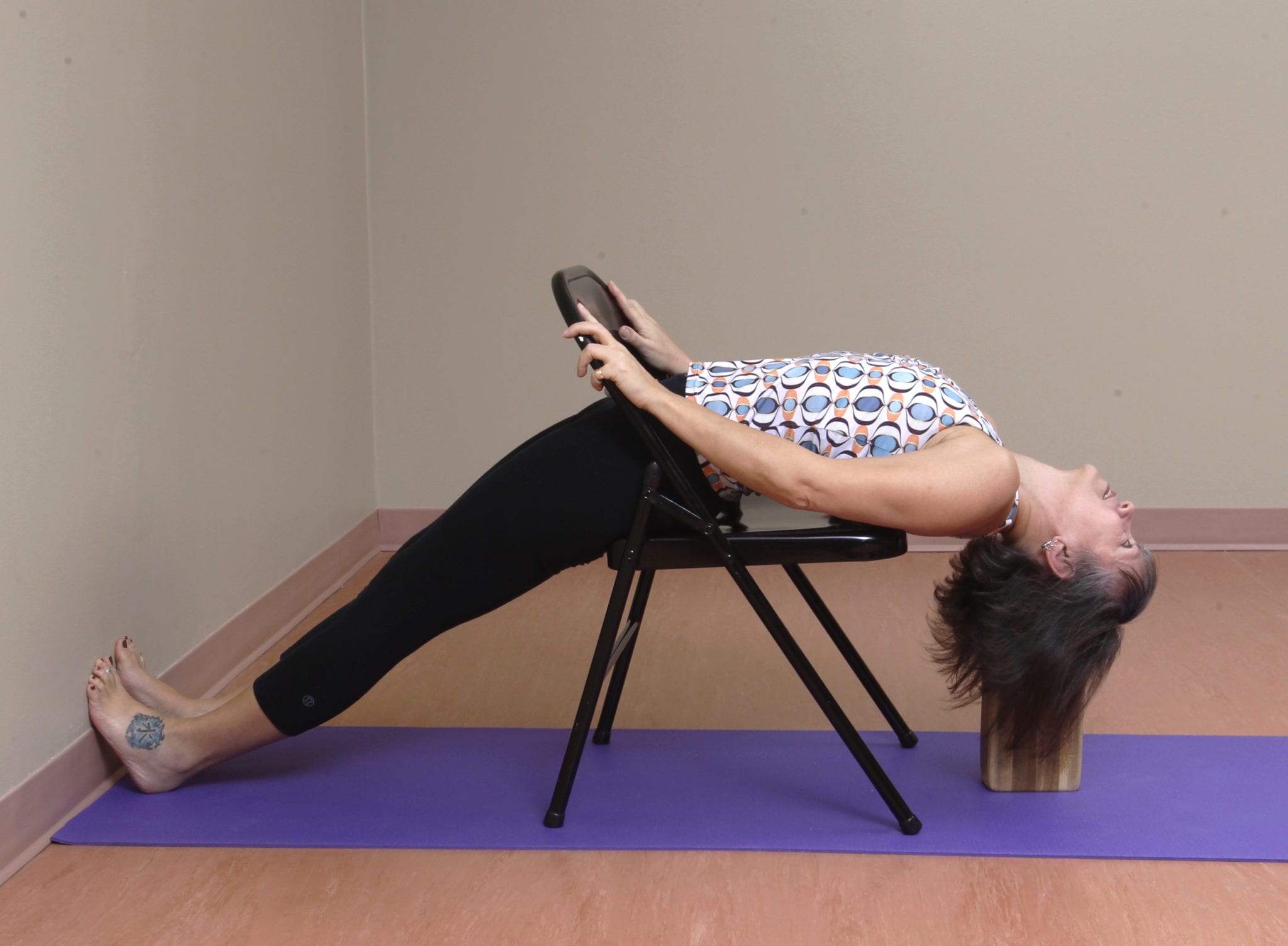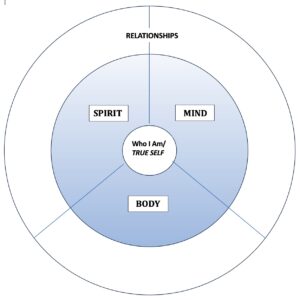February is often touted as “heart month” due to Valentine’s Day, which symbolizes for many lovers a time to celebrate their romantic relationship. Unfortunately, consciously practicing loving kindness and compassion with one person for one day out of 365 is not going to change the world or for that matter our ability to relate positively to others.
However, opening our heart in all our relations — friends, family, teachers, students, mentors, pets, strangers, even people we disagree with — teaches us the tools we require to shift our experience from suffering and struggle to inner and outer peace. In yoga, we refer to this heart-opening practice of loving kindness and compassion as ahimsa, which is the first of ten Yamas and Niyamas intended to purify our thoughts, words and actions toward ourselves and others.
Heart health involves more than expressing positive emotions. As anyone who has experienced emotional heartache knows, there is a corresponding physical sensation felt in the organ itself. Although the heart may be the metaphysical home of our emotions, it additionally serves to pump blood, nutrients and oxygen throughout our physical body. Heart disease, which limits this life-nourishing function, is the primary cause of death for both men and women regardless of age or background. This lack of heart health defines our global capacity to express loving kindness and compassion. Fortunately, yoga provides us with the tools to heal, strengthen and open an emotionally wounded or physically weakened heart. When we tend to our heart by opening and strengthening it, we enable physical and emotional healing to counter these debilitating habits: hunching forward while seated and armouring our hearts from a lifetime of experiencing loss, disappointment and negativity.
Arguably, the major purpose of a human being’s mid-life crisis is the opportunity to awaken to these damaging habits and to change our ways. Using this second chance wisely by unveiling our innermost suffering and pain is what removes both. Fortunately, we do not have to wait until we are in our 40s to dismantle the walls we protectively erected around our heart. We can begin immediately to heal both body and mind by releasing negative beliefs and thought patterns, which are the source of both physical and mental illnesses. In addition, committing to a supported backbending practice, such as the one illustrated below, uncovers the layers of pain and the concretized rigidity and compression not only in the heart but in the surrounding ribcage, respiratory diaphragm and lungs.
Whether your support is a chair or bench, placing it in any of the following three positions serves to open and nourish the heart: the top of the shoulder blades onto the front edge of the bench or chair opens the upper lung chamber and the atriums of the heart; the middle of the shoulder blades onto the front edge of the bench or chair opens the lower heart chamber — the ventricles of heart; and the bottom of the shoulder blades onto the front edge of the bench or chair opens the entire heart.
The way is not in the sky. The way is in the heart. Buddha
As the Buddha instructs us, the way to happy, healthy living is through a happy, healthy heart. Remember to practice loving kindness and compassion by beginning with gentle supported backbends. Honour your body’s wisdom and current capacity by not pushing into a posture it is not ready for. Once you feel stronger and more open around your heartspace, then gradually advance into deeper backbends and feel the joy leak out.
Actions:
Beginners — do only the pose illustrated with a chair. Stretch down through your legs and into your heels to ground and lengthen your spine. Surrender into the edge of the chair and breathe into your heart space.
More advanced practitioners — do the three positions shown using a bench (a chair may be used in place of the bench). Find the body’s two-directional movement: from the inner groins down into your feet, and from the sides of your spine up through your elbows. Surrender into the edge of the bench or chair and breathe into your heart space.
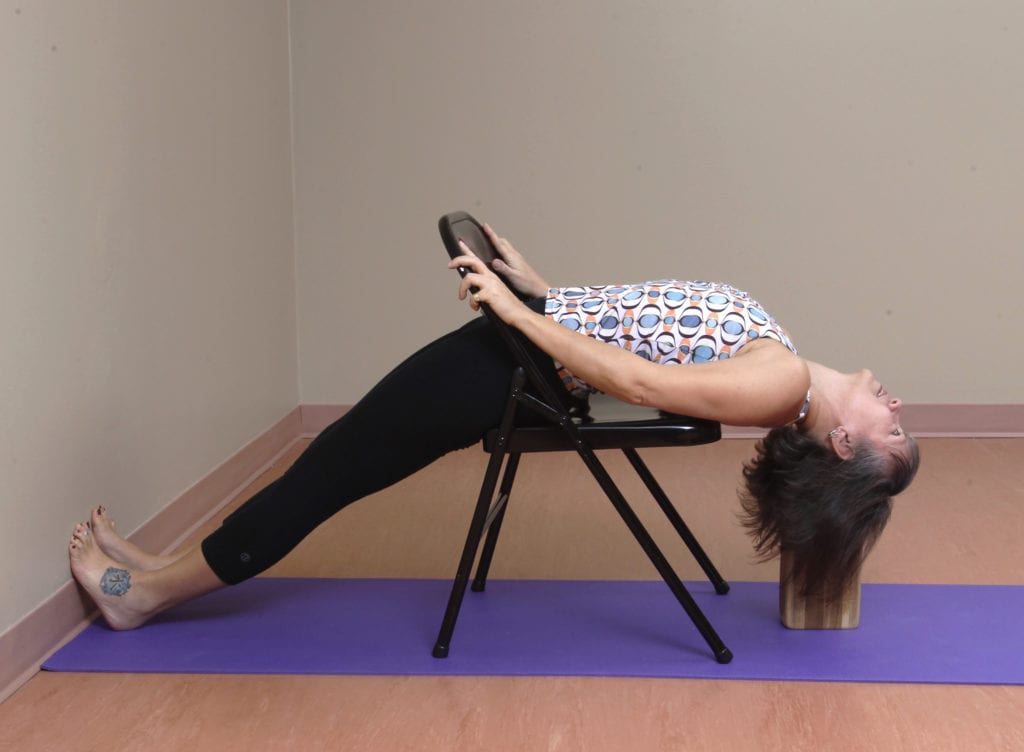
SALAMBA VIPARITA DANDASANA for Beginners (Supported Inverted Staff pose)
Place the chair as shown, then climb into it one leg at a time. Be sure to have a support ready for your head. Sit your sit bones at the very back edge of the chair. Straighten your legs extending your toe mounds into the wall and heels into the floor. Inhale, lift and lengthen the breastbone toward the chin. On the exhale, lie back onto the chair seat. Draw your tailbone towards your heels. Place your head on the support and continue to hold the side rungs of the chair. Find the action. Hold for 5 to 10 breaths.
To come out, lift your head with one hand until your neck muscles engage. With both hands holding the chair sides, pull yourself straight up to a sitting position. Rest for 5 breaths and resist leaning forward onto the chair back, then climb out.
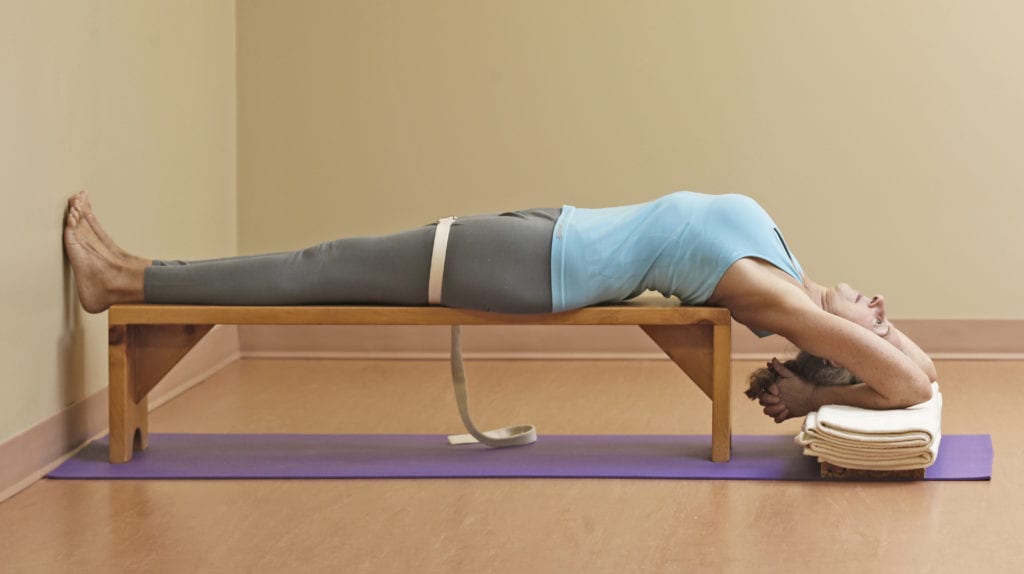
SALAMBA VIPARITA DANDASANA position #1 (Supported Inverted Staff pose)
Have the necessary head support in front of the bench. Sit on the bench with legs extended and upper thighs snugly belted. Lie back with the edge of the bench into your upper shoulder blades. Bring your arms overhead, bend your elbows resting your forearms onto sufficient support, and interlace your fingers behind your head (Sirsasana arms). Find the action. Hold for 10 to 20 breaths. Move into position #2.
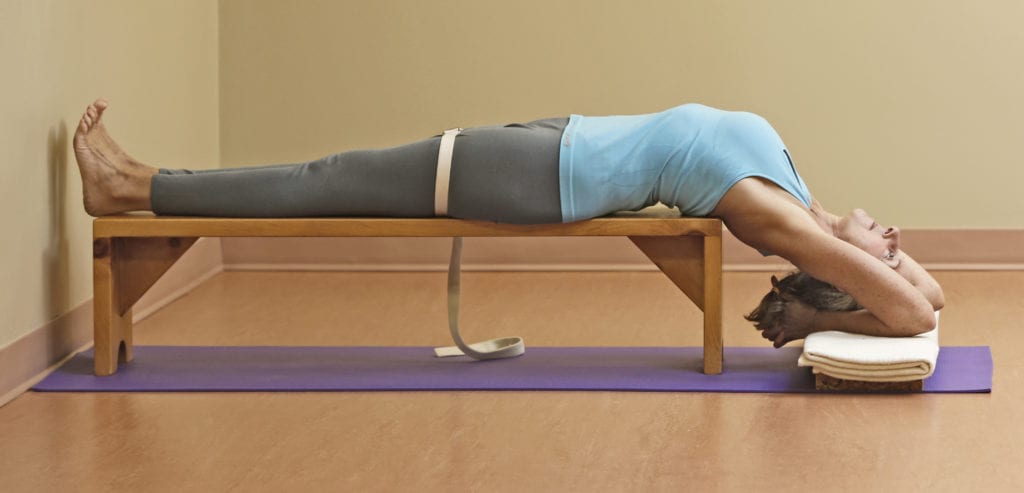
SALAMBA VIPARITA DANDASANA position #2 (Supported Inverted Staff pose)
Release your hands from behind your head and use them to help you slide forward until you feel the edge of the bench into the middle of your shoulder blades. Reduce the height under your head to allow full extension into your upper arms, and place your arms into Sirsasana (headstand) position. Find the action. Hold for 10 to 20 breaths. Move into position #3.
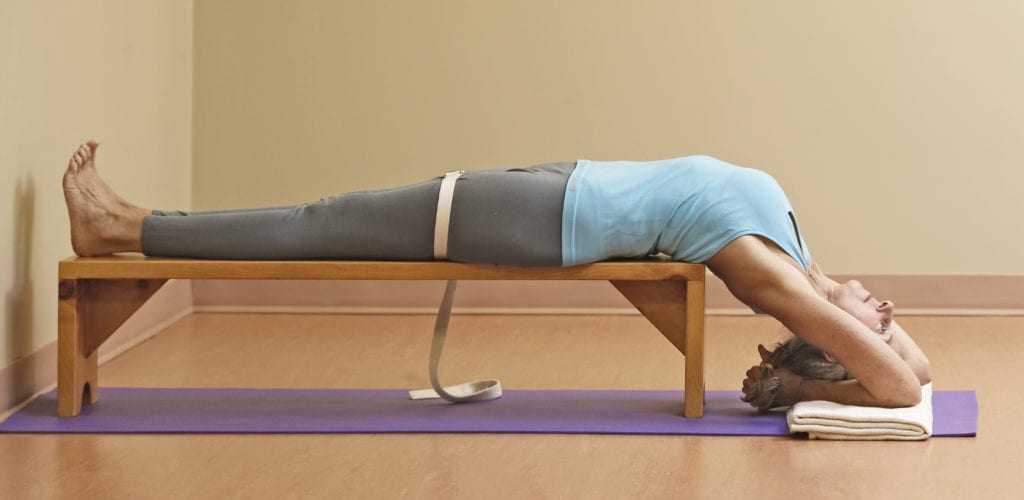
SALAMBA VIPARITA DANDASANA position #3 (Supported Inverted Staff pose)
Release your hands from behind your head and use them to help you slide forward until you feel the edge of the bench into the bottom of your shoulder blades. Adjust the height under your head once more to allow full extension into your arms, and then place your arms back into Sirsasana position. Find the action. Hold for 10 to 20 breaths.
To come out of the pose, use your hands to gently draw your torso and pelvis off the bench. Rest your pelvis on the floor and your calves onto the bench for 5 to 10 breaths before rolling to your side and pressing up.
Winnipeggers Helen Maupin (www.righttojoy.com) and Candace Propp (www.natureofcontentment.com) are 500-hour certified yoga teachers and authors of the Creating Space: Yoga Actions book series. To purchase print or ebooks, please visit their websites. For Yoga Teacher Training with them and Stacy Schroder register at www.sereneyogastudio.com.

